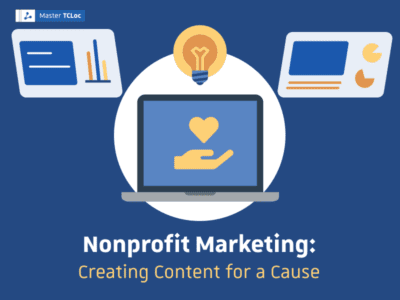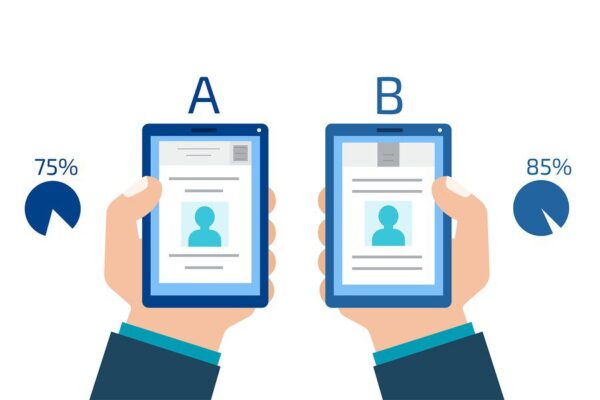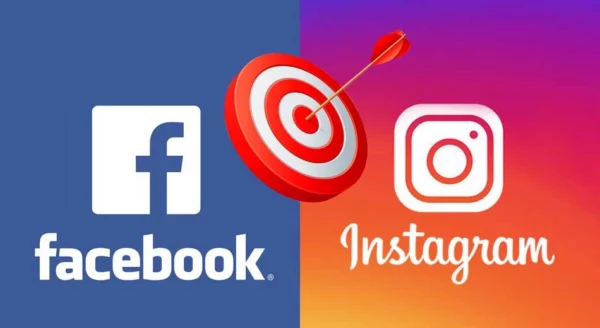If you are running a nonprofit organization, you are likely always looking for ways to raise awareness and attract new donors and supporters. One effective strategy for achieving these goals is nonprofit content marketing. By creating valuable, engaging content that speaks to your audience’s interests and needs, you can build your organization’s brand, establish trust with potential supporters, and inspire action.
Nonprofit content marketing can take many forms, from blog posts and social media updates to videos, podcasts, and email newsletters. The key is to create content that provides value to your audience while also aligning with your organization’s mission and goals. For example, if your nonprofit focuses on environmental conservation, you might create blog posts about sustainable living, share infographics about the impact of climate change, or produce videos that showcase the beauty of natural landscapes.

By consistently creating and sharing high-quality content, you can build a loyal following of supporters who are passionate about your cause. Over time, this can translate into increased donations, volunteerism, and other forms of support that help your nonprofit achieve its goals. So if you’re looking for a way to raise awareness and build your organization’s brand, consider investing in nonprofit content marketing.
Understanding Nonprofit Content Marketing
Nonprofit organizations face unique challenges when it comes to marketing. They often have limited budgets, and their missions may not be as well-known or understood as those of for-profit companies. Content marketing can be a powerful tool for nonprofits to increase awareness of their missions and engage with their audiences.
Defining Content Marketing in the Nonprofit Sector
Content marketing is the creation and distribution of written and visual content to inspire interest in your nonprofit’s mission and programs. The goal is to provide valuable and relevant information to your audience, rather than simply promoting your organization. By providing content that is useful and engaging, you can build trust with your audience and establish your organization as a thought leader in your field.
Nonprofit content marketing can take many forms, including blog posts, infographics, videos, and social media posts. Best practices dictate that you create content that is aligned with your organization’s mission and goals and that resonates with your audience.

The Role of Content Marketing in Mission Awareness
One of the primary benefits of nonprofit content marketing is that it can help increase awareness of your organization’s mission and programs. By creating content that is focused on your mission and the issues you care about, you can attract new supporters and engage with your existing audience.
Content marketing can also help you build relationships with your supporters. By providing valuable information and engaging with your audience, you can build trust and establish your organization as a credible source of information that donors and other supporters might just be looking for.
1. Developing a Nonprofit Marketing Strategy
A solid marketing strategy is essential for any nonprofit organization seeking to achieve its goals. Here are the key steps to developing a successful nonprofit marketing strategy:
Setting SMART Goals
The first step in developing a nonprofit marketing strategy is to set SMART (Specific, Measurable, Achievable, Relevant, and Time-bound) goals. For example, you might set a goal to increase donations by 20% in the next six months or to attract 50 new volunteers by the end of the year. Make sure your goals are specific, measurable, and realistic, and set a deadline for achieving them.
Identifying Target Audiences
Once you have set your goals, the next step is to identify your target audiences. Who are the people you want to reach with your message? Are they potential donors, volunteers, or program participants? What are their needs and interests, and how can you best communicate with them? Conducting market research and creating buyer personas can help you better understand your target audiences and tailor your marketing messages to their needs.
Creating a Content Strategy

With your goals and target audiences in mind, the next step is to create a content marketing strategy. Your content strategy should outline the types of content you will create and share, such as blog posts, social media updates, videos, and infographics. It should also specify the channels you will use to distribute your content, such as Facebook, Twitter, LinkedIn, or email newsletters. Make sure your content is high-quality, engaging, and relevant to your target audiences, and use analytics to track the effectiveness of your content strategy.
By following these key steps, you can develop a nonprofit marketing strategy that helps you achieve your goals, reach your target audiences, and create compelling content that inspires action.
2. Leveraging Social Media and Digital Channels
Nonprofits can leverage social media and digital channels to reach a wider audience and promote their cause. By creating engaging content and using the right platforms, you can increase your visibility, attract new followers, and encourage donations. Here are some tips for maximizing your social media and digital marketing efforts.
Maximizing Facebook and Instagram Engagement
Facebook and Instagram are some of the most popular social media platforms, and they offer a variety of tools for nonprofits to engage with their audience. To maximize engagement on these platforms, consider the following:
- Use eye-catching visuals: Images and videos are more likely to grab people’s attention than plain text. Use high-quality visuals to showcase your cause and your impact.
- Post regularly: Consistency is key when it comes to social media. Post regularly to keep your followers engaged and informed.
- Use hashtags: Hashtags can help you reach a wider audience and connect with people who are interested in your cause. Use relevant hashtags in your posts and encourage your followers to use them as well.
Utilizing Video Content on YouTube and TikTok
Video content is becoming increasingly popular on social media. This is an advantage for nonprofit content marketing. YouTube and TikTok are two platforms that are particularly well-suited for video content. Here are some tips for using these platforms effectively:
- Keep it short and sweet: Attention spans are short on social media, so keep your videos short and to the point.
- Be creative: Use creative visuals and storytelling to make your videos stand out.
- Use captions: Many people watch videos with the sound off, so use captions to make sure your message gets across.
Effective Use of Twitter and LinkedIn
Twitter and LinkedIn are two platforms that are particularly well-suited for sharing news and updates about your nonprofit. Here are some tips for using these platforms effectively:
- Use Twitter to share news and updates in real-time: Twitter is a great platform for sharing news and updates as they happen. Use it to keep your followers informed about your latest activities.
- Use LinkedIn to connect with donors and volunteers: LinkedIn is a professional networking platform that can be a valuable tool for connecting with potential donors and volunteers.
- Use both platforms to engage with your audience: Both Twitter and LinkedIn offer opportunities to engage with your audience, so make sure to respond to comments and messages in a timely manner.
By leveraging social media and digital channels, nonprofits can increase their visibility, attract new followers, and encourage donations. Use these tips to make the most of your social media and digital marketing efforts.
3. Content Creation and Optimization

When it comes to nonprofit content marketing, creating and optimizing content is crucial to engage your audience, increase your online visibility, and drive more traffic to your website. Here are some tips on how to craft engaging blog posts, design impactful newsletters, and implement search engine optimization (SEO) best practices for your nonprofit content.
Crafting Engaging Blog Posts
Blog posts are an excellent way to share your nonprofit’s story, educate your audience, and provide value to your readers. To create engaging blog posts, consider the following:
- Start with a hook: Begin your blog post with a catchy headline and an attention-grabbing opening that makes readers want to keep reading.
- Tell a story: Use storytelling techniques to make your blog post more relatable and memorable. Share personal anecdotes, case studies, or success stories to illustrate your points.
- Provide value: Make sure your blog post provides value to your readers. Offer actionable tips, insights, or advice that they can use in their daily lives.
- Include visuals: Use high-quality images, videos, infographics, or other visuals to break up the text and make your blog post more engaging.
- End with a call to action (CTA): Encourage your readers to take action by including a CTA at the end of your blog post. This could be signing up for your newsletter, making a donation, or sharing your post on social media.
Designing Impactful Newsletters
Newsletters are a great way to keep your supporters informed about your nonprofit’s activities, events, and achievements. To design impactful newsletters, consider the following:

- Keep it concise: Keep your newsletter short and to the point. Use bullet points, subheadings, and white space to make it easy to scan and read.
- Make it visually appealing: Use a clean, professional design that reflects your nonprofit’s brand. Include high-quality images, graphics, or other visuals to make your newsletter more engaging.
- Personalize it: Address your readers by name and tailor your content to their interests and preferences. Use segmentation and personalization tools to send targeted newsletters to specific groups of supporters.
- Include a CTA: Encourage your readers to take action by including a CTA in your newsletter. This could be making a donation, registering for an event, or sharing your newsletter on social media.
SEO Best Practices for Nonprofit Content
Implementing SEO best practices can help your nonprofit content marketing rank higher in search engine results pages (SERPs) and attract more organic traffic to your website. To optimize your nonprofit content for SEO, consider the following:
- Research keywords: Conduct keyword research to identify the keywords and phrases that your target audience is searching for. Use these keywords in your content, meta titles, descriptions, and URLs.
- Optimize your content: Use on-page SEO techniques such as optimizing your headings, using internal and external links, and optimizing your images and videos.
- Create quality content: Focus on creating high-quality, relevant, and original content that provides value to your readers. Avoid keyword stuffing, duplicate content, or other black hat SEO techniques.
- Track your results: Use analytics tools to track your SEO performance and identify areas for improvement. Monitor your rankings, traffic, click-through rates, bounce rates, and other metrics to measure your success.
4. Measuring Success and Adjusting Tactics

As a nonprofit, measuring the success of your content marketing efforts is crucial to understanding what works and what doesn’t. This will allow you to adjust your tactics and optimize your campaigns for maximum effectiveness and a good return on investment. In this section, we will explore some key metrics to track and how to use Google Analytics to gain insights into your audience.
Understanding Key Metrics and Google Analytics
One of the most important metrics to track is the success of your fundraising efforts. This can be measured by the number of donations received, the amount of money raised, and the conversion rate of your donation pages. You can also track engagement metrics such as page views, time on site, and bounce rate to understand how your audience interacts with your content.
Google Analytics is a powerful tool that can help you track these metrics and gain insights into your audience. By setting up goals and tracking events, you can see which pages are driving the most conversions and where your traffic is coming from. This information can be used to optimize your campaigns and improve your fundraising efforts.
The Importance of A/B Testing and Feedback
Another key tactic for measuring success is A/B testing. By testing different versions of your content, you can see which performs better and make data-driven decisions about what to include in future campaigns. This can include testing different headlines, images, calls-to-action, and donation amounts.

In addition to A/B testing, it’s important to gather feedback from your audience. This can be done through surveys, focus groups, or social media listening. By understanding what your audience likes and dislikes about your content, you can make informed decisions about how to improve your campaigns and better meet their needs.
In summary, nonprofit content marketing is essential if you are looking to achieve better goals in supporting your cause and creating social change. You must measure the success of your nonprofit content marketing efforts to identify effective areas and those that need adjustments. These will help you optimize your campaigns for maximum effectiveness.




